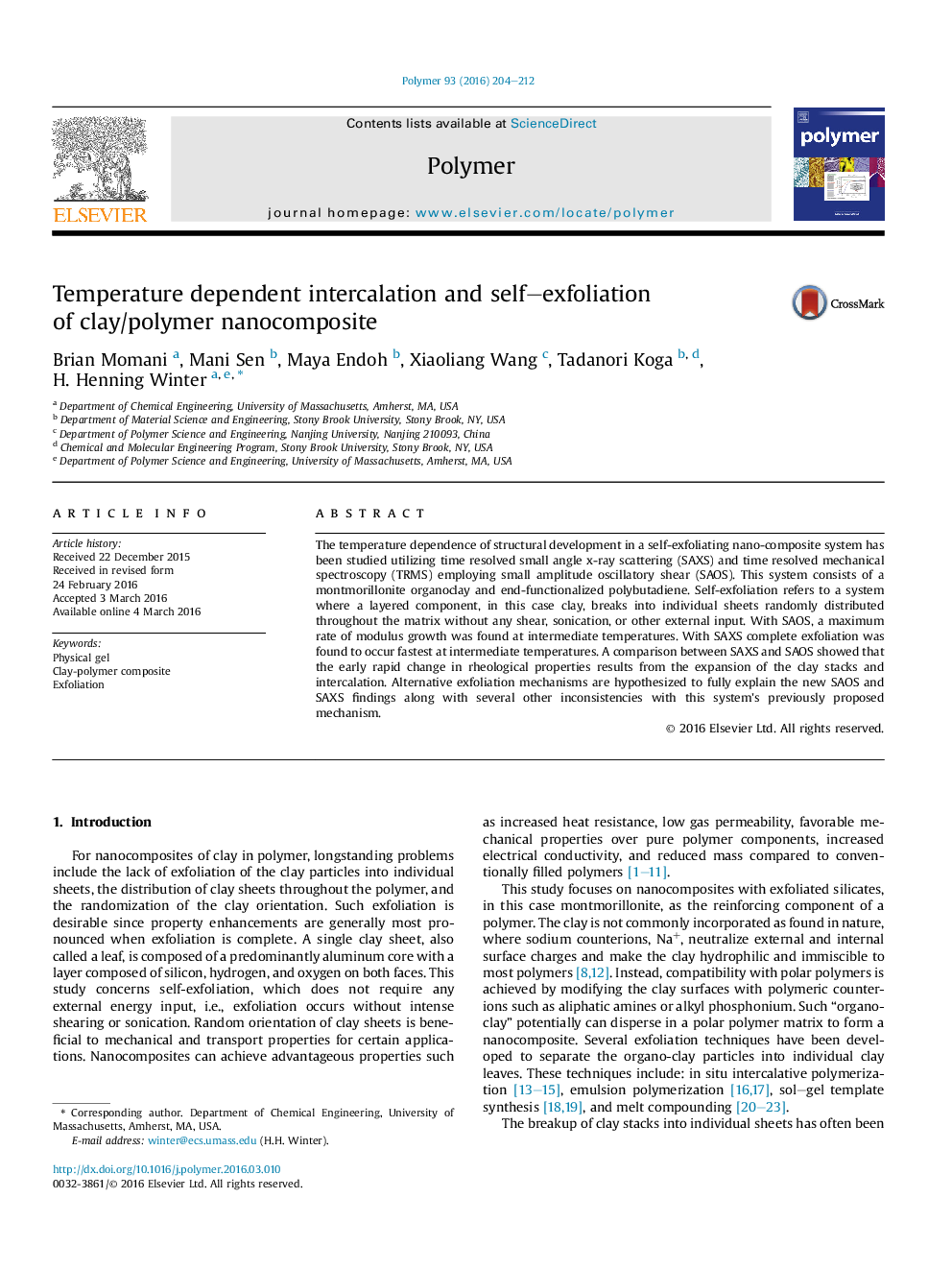| کد مقاله | کد نشریه | سال انتشار | مقاله انگلیسی | نسخه تمام متن |
|---|---|---|---|---|
| 5179361 | 1502513 | 2016 | 9 صفحه PDF | دانلود رایگان |

• Intercalation was found to be responsible for the majority of the modulus growth.
• Intercalation was observed to occur in minutes while exfoliation took hours.
• Gelation occurs quickly after mixing and structure develops in the soft solid state.
• An optimum exfoliation rate was found at intermediate temperatures.
• An adsorption dependent mechanism is hypothesized to explain observations.
The temperature dependence of structural development in a self-exfoliating nano-composite system has been studied utilizing time resolved small angle x-ray scattering (SAXS) and time resolved mechanical spectroscopy (TRMS) employing small amplitude oscillatory shear (SAOS). This system consists of a montmorillonite organoclay and end-functionalized polybutadiene. Self-exfoliation refers to a system where a layered component, in this case clay, breaks into individual sheets randomly distributed throughout the matrix without any shear, sonication, or other external input. With SAOS, a maximum rate of modulus growth was found at intermediate temperatures. With SAXS complete exfoliation was found to occur fastest at intermediate temperatures. A comparison between SAXS and SAOS showed that the early rapid change in rheological properties results from the expansion of the clay stacks and intercalation. Alternative exfoliation mechanisms are hypothesized to fully explain the new SAOS and SAXS findings along with several other inconsistencies with this system's previously proposed mechanism.
Figure optionsDownload high-quality image (170 K)Download as PowerPoint slide
Journal: Polymer - Volume 93, 14 June 2016, Pages 204–212